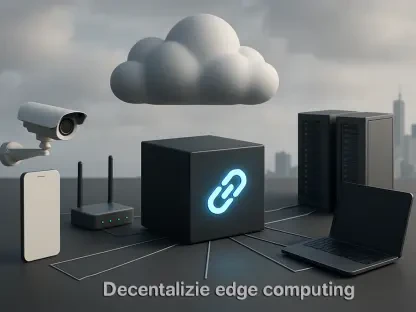In today’s fast-evolving tech landscape, a staggering statistic reveals that nearly 70% of IT professionals globally are considering moving workloads from public cloud environments back to on-premises infrastructure, signaling a profound reevaluation of how enterprises manage their IT strategies amid rising costs, security concerns, and operational complexities. As businesses grapple with the balance between scalability and control, this roundup dives into diverse perspectives from industry leaders, analysts, and technology providers. The purpose is to unpack the drivers behind this trend, explore innovative solutions fueling the movement, and assess whether repatriation—or a hybrid approach—represents the next frontier for enterprise IT.
Exploring the Cloud Repatriation Trend
Why Enterprises Are Rethinking Public Cloud Reliance
The allure of public cloud solutions has long been rooted in their promise of scalability and reduced upfront costs. However, many organizations now face unexpected challenges, including escalating expenses and the intricacies of managing multi-cloud setups. Industry surveys indicate a growing frustration with unpredictable billing models that often outweigh initial savings, prompting a significant number of companies to reassess their cloud-first strategies.
Beyond financial concerns, security and compliance issues have emerged as critical pain points. Enterprises operating in regulated industries find public cloud environments difficult to align with strict data sovereignty requirements. Feedback from IT decision-makers highlights a preference for greater oversight of sensitive data, driving interest in repatriating workloads to environments where policies can be directly enforced.
This pivot isn’t merely a reaction to dissatisfaction but a strategic move to reclaim autonomy over IT operations. Conversations across tech forums reveal that businesses are seeking infrastructure that aligns more closely with long-term goals, rather than relying on external providers whose priorities may not match their own. The question remains whether this marks a full retreat from the cloud or a recalibration of priorities.
VMware Cloud Foundation 9.0: A Catalyst for On-Premises Revival
Among the solutions gaining traction in this repatriation wave is VMware Cloud Foundation (VCF) 9.0, a platform designed to streamline private cloud infrastructure. Industry voices praise its unified software-defined approach, which integrates compute, networking, and storage into a single, manageable system. This design addresses historical pain points of fragmented on-premises setups by offering centralized operations and enhanced security features like real-time SecOps dashboards.
Further bolstering its appeal are upcoming additions such as Private AI Services, expected to roll out between the current year and early 2026, at no additional cost. Technology providers and users alike note that such features position VCF 9.0 as a forward-thinking alternative to public cloud dependency. The ability to isolate workloads securely through Virtual Private Cloud constructs also garners positive feedback for meeting enterprise-grade demands.
However, some caution against over-reliance on a single vendor ecosystem. While the platform’s benefits are widely acknowledged, certain IT managers express concerns about potential lock-in risks and the need for robust exit strategies. This balanced view underscores the importance of evaluating such tools within the broader context of an organization’s unique needs and existing infrastructure.
Industry Perspectives on Repatriation vs. Rationalization
A Broader Lens: Rationalization as the Core Focus
Not all industry analysts frame the current shift as outright repatriation; many describe it as part of a larger workload rationalization process. This perspective emphasizes a deliberate evaluation of where workloads best fit—whether in public, private, or hybrid environments—based on cost, performance, and compliance factors. Such an approach resonates with IT leaders who prioritize flexibility over dogmatic adherence to any single model.
Regional and industry-specific requirements further shape this rationalization mindset. For instance, businesses in Europe often cite stringent data protection laws as a reason to maintain on-premises setups, while sectors like finance highlight the need for tailored security protocols. These insights suggest that repatriation is less about abandoning the cloud and more about crafting infrastructure that mirrors specific operational realities.
This nuanced stance challenges the narrative of a complete cloud exodus. Instead, it positions the movement as a pragmatic effort to optimize IT investments. Analysts stress that continuous assessment of data estates is essential, ensuring that decisions remain aligned with evolving business objectives rather than fleeting trends.
Hybrid IT: Merging Control with Cloud Flexibility
A growing consensus points to hybrid IT as a sustainable path forward, blending the control of on-premises systems with the agility of public cloud resources. Many IT strategists argue that this model allows enterprises to leverage the best of both worlds—customizing private infrastructure for critical workloads while tapping into cloud scalability for less sensitive tasks. This balance is seen as a way to mitigate risks associated with full reliance on either approach.
Comparative analysis reveals distinct advantages on both sides: public clouds excel in rapid deployment and global reach, whereas private setups offer deeper customization and enhanced security. Feedback from technology consultants suggests that future workload placement will increasingly depend on dynamic assessments, with hybrid frameworks providing the adaptability needed to pivot as conditions change.
The hybrid model also fosters innovation without compromising stability. Organizations adopting this strategy report improved efficiency in resource allocation, as they can scale cloud usage during peak demands while maintaining core operations in-house. This emerging paradigm hints at a redefinition of enterprise IT, where strategic integration takes precedence over singular solutions.
Strategic Insights for Navigating the Shift
For IT leaders, the repatriation trend underscores several critical drivers, including the need to address cost overruns and security vulnerabilities in public cloud setups. Solutions like VCF 9.0 are gaining attention for their role in revitalizing on-premises infrastructure, offering a viable alternative for those seeking greater control. These insights reflect a broader industry push toward environments that prioritize operational autonomy.
Practical guidance for decision-makers includes conducting thorough workload assessments to identify which applications are best suited for repatriation. Prioritizing compliance with regional and industry regulations is also paramount, as is investing in platforms that support seamless hybrid integration. Such steps ensure that infrastructure decisions are both tactical and aligned with overarching business goals.
Additionally, regular evaluations of data estates can help maintain agility in a shifting tech landscape. Leveraging tools for unified infrastructure management further simplifies the transition between environments. These actionable measures empower enterprises to build resilient IT strategies that balance immediate needs with future scalability.
Reflecting on the Path Forward
Looking back, the discussions around cloud repatriation illuminated a pivotal moment in enterprise IT, where the limitations of public cloud environments spurred a renewed focus on on-premises and hybrid solutions. Diverse opinions from industry leaders and analysts painted a picture of strategic recalibration, emphasizing rationalization over outright rejection of cloud technologies. The exploration of tools like VCF 9.0 highlighted tangible options for addressing longstanding challenges.
Moving forward, enterprises should consider initiating comprehensive audits of their current cloud commitments to pinpoint inefficiencies and security gaps. Exploring hybrid-ready platforms can provide the flexibility needed to adapt to changing demands, while fostering partnerships with technology providers ensures access to cutting-edge innovations. These steps pave the way for a more deliberate and resilient approach to IT infrastructure management in the years ahead.









